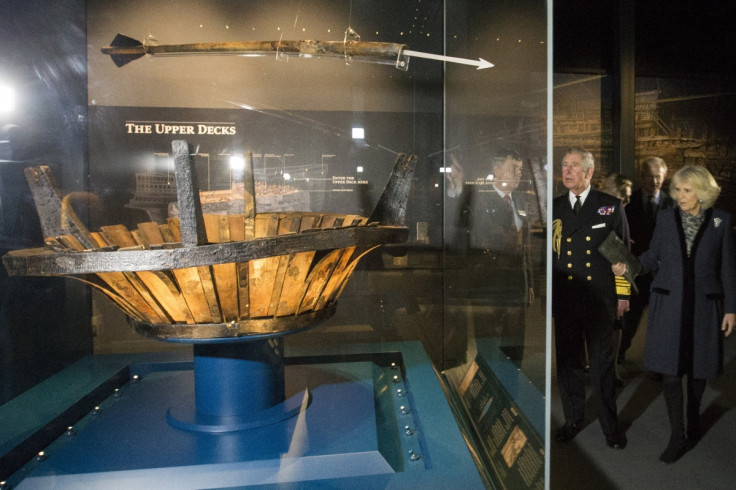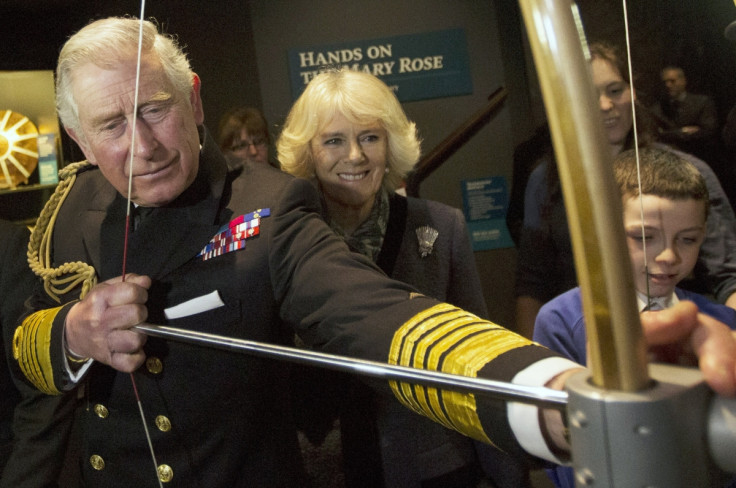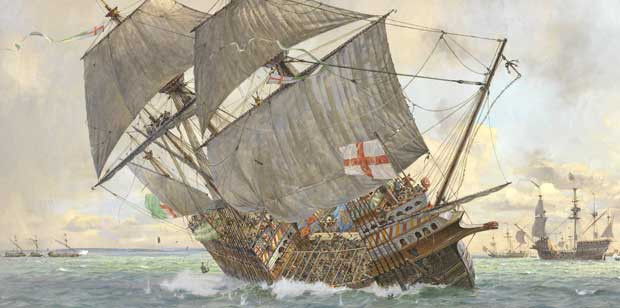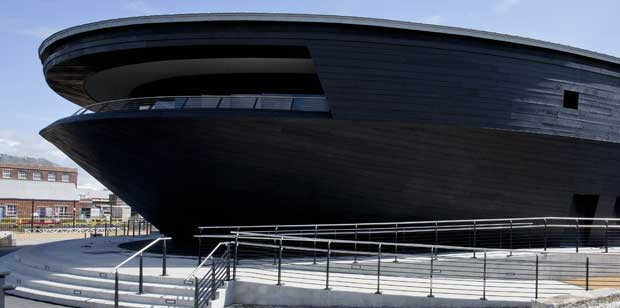Prince Charles and Camilla Pay Nostalgic Visit to Portsmouth's Mary Rose Museum
Prince Charles Recalls Diving Down to the Mary Rose

The Prince of Wales was getting nostalgic as he recalled diving down to the Mary Rose, during a visit to the new £35 million museum in Portsmouth's Historic Dockyard, which houses the remains of the Tudor warship.
Prince Charles, who is the President of the Mary Rose Trust, has been involved with the ship ever since his first dive on the wreck back in 1974. He was one of the last people to dive down to the wreck of the flagship of Henryy VIII's navy in 1982. He later watched as the hull was raised from the site outside Portsmouth Harbour where it was sunk in battle in 1545.
I remember my days of diving on the ship out in the Solent in the most impossible conditions, it was like swimming in a kind of lentil soup, you couldn't see anything, or so I thought, until it was under your nose.
Arriving in a Royal Navy helicopter in Portsmouth, and wearing a naval uniform, he was accompanied by the Duchess of Cornwall who witnessed a demonstration by the Ship's medical team and perused some of the 19,000 artefacts that were returned to the wreck after they were retrieved from the seabed in 1982.
In a speech to fundraisers and volunteers, Charles spoke of his time diving with archaeologists on the wreck site just outside Portsmouth Harbour.
"I remember my days of diving on the ship out in the Solent in the most impossible conditions, it was like swimming in a kind of lentil soup, you couldn't see anything, or so I thought, until it was under your nose. What I could never get over was the sheer expertise of the archaeologists operating under water."

He also described the day when the wreck was lifted from the seabed using a crane that was on loan for only one day. He explained how he encouraged the crew to get on with the job despite technical difficulties including poor weather.
"I will never forget the almighty crash as the chains came down and I thought it was all my fault," he explained. "I think it was worth taking the risk as we have this truly remarkable example of a Tudor warship which is unique."

Outside the museum and on the deck of HMS Victory, the couple were greeted by pupils of St John's Cathedral Primary School and St Swithun's Catholic Primary School, The prince interatced withthe children speaking to them in French.
The Mary Rose: A Brief History

The Mary Rose was the pride of Henry VIII's fleet weighing nearly 600 tonnes. built in 1510 The ship was named after Henry VIII's sister, Mary Tudor.
After serving for 33 years in several wars against France, Scotland, and Brittany and after being substantially rebuilt in 1536, she saw her last action on 19 July 1545.
On that fateful day, while fighting against a French invasion fleet, the Mary Rose sank in the Solent, the straits north of the Isle of Wight, with the loss of nearly 400 crew. Many of the crew couldn't swim as they were superstitious and believed to learn would tempt fate.
The wreck of the Mary Rose was rediscovered in 1971 and salvaged in 1982 by the Mary Rose Trust in one of the most complex and expensive projects in the history of maritime archaeology.

The starboard side of the sunken vessel was raised on October 11, 1982, seen by a global TV audience of 60million. Items found aboard included musical instruments and longbows. many artefacts, especially those that were buried in silt, had been preserved; the long exposure to an underwater environment had rendered most of them sensitive to exposure to air after recovery.
Conserving the hull of the Mary Rose was the most complicated and expensive task for the project.The surviving section of the ship and thousands of recovered artefacts are of immeasurable value as a Tudor-era time capsule
In 2002, a donation of £4.8 million from the Heritage Lottery Fund and equivalent monetary support from the Portsmouth City and Hampshire County Councils helped to keep the conservation work on schedule. After years of planning, fundraising and building, the new Mary Rose museum opened to the public on the 31st May 2013.
© Copyright IBTimes 2025. All rights reserved.






















